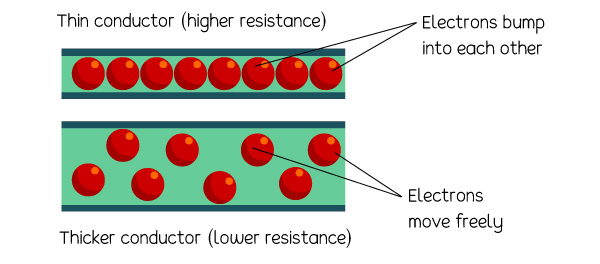- Electricity
What is current electricity?
An electric current in simple terms is electrons in motion along a path, regardless of the number of electrons flowing. The path may be a conductor such as copper, silver, and aluminum. Free electrons can be forced to move from one region of the conductor to the other.
Current
Current is the rate at which an electric charge flows in a conductor. It is the number of electrons passing a given point in a second. If more electrons pass by a given point on the conductor, the current is more.
The symbol for current is the letter “I”. Electrical current is measured in Amperes or “amps”.
Voltage
Voltage measures the difference in electrical energy between two points of a circuit. Voltage is measured in Volts and represented by the letter ‘V’
Current and voltage can be very confusing.
Here is an illustration to help you. Think of electrical charge, current, and voltage as a massive water tank connected to a pipe.
Water = Charge
Pressure = Voltage
Flow = Current
The water in the tank represents an electric charge. The more water in there, the more the charge. Voltage is like pressure. The more the water, the higher the pressure (voltage) at the end of the pipe.

In the diagram above, there is a voltage at point A, but no current, because the tap is closed and the water is NOT flowing. It also means there can be voltage without current, but no current without voltage.
At point B, the tap is opened, and water flows. At this point, there is both voltage and current because there is a flow.
If we open the tap to drain some water out, the pressure will reduce (lower voltage).
Just as a pump can be used to force water through a pipe, we can use an external source of power (electromotive force) such as a battery to push free electrons in conductors to flow from place to place along a path. Current moving in one direction is called Direct Current. Electrons in the atom do not move in a straight direction. They undergo repeated collisions with other electrons in nearby atoms. During these collisions, free electrons are knocked towards the positive end of the conductor.
Resistance

Resistance can be understood in two ways.
In terms of electron flow, it is the difficulty that electrons face as they flow inside a conductor (wire). A thin wire means that the electrons have little space to flow, and they bump into each other, therefore the flow is not smooth enough. Here, we say there is more resistance. In a thicker wire, there is more space for the electrons to move. There is less bumping into each other, and therefore there is less resistance.
In terms of resistors on an electrical circuit, it is anything that gets in the way of the electricity. Examples include bulbs, lamps, buzzers, and so on. These resistors use up some of the electricity. Without them, there could be a short circuit.
